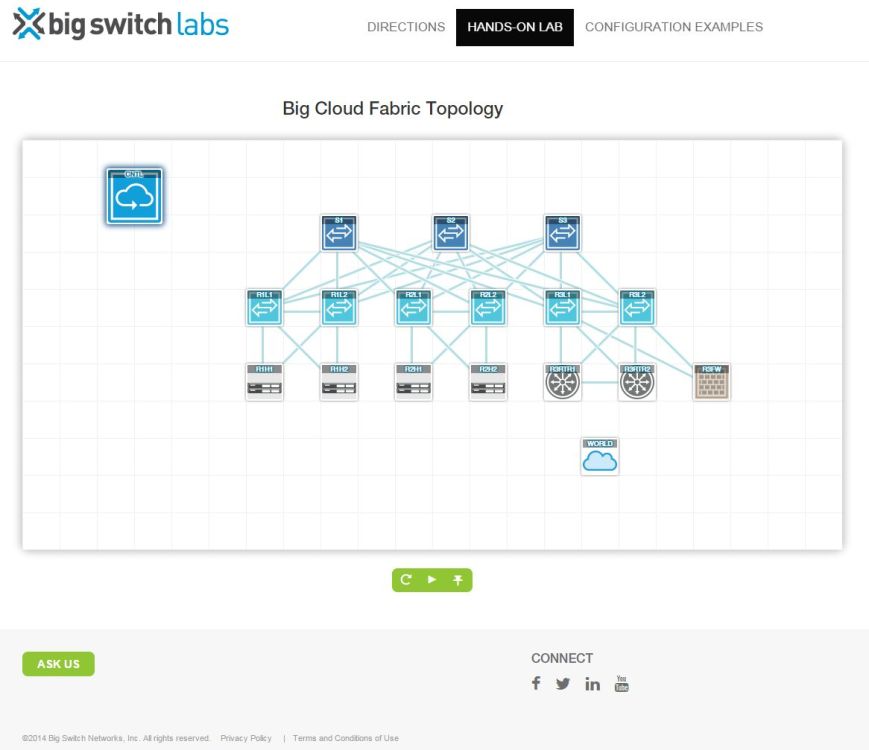In my career I’ve typically been responsible for plumbing together networks for branch, campus, and (very) small enterprise networks that had datacenters that were defined by single-digit rack numbers. So, when I’m reading or watching news about datacenter networking I often have a difficult time putting this into perspective, especially when the topic is focused on warehouse and football field sized datacenters. This might explain why I have not spent a lot of time working with or learning about Software Defined Networking, because it seems to me that SDN is a solution to a problem of scale, and scale isn’t something I’ve had to deal with.
As networks grow, management of configuration and policy eventually becomes ungainly and increasingly difficult to keep consistent. Having to log into 100, 200, even 1000 devices to make a change is cumbersome, and so we as networkers seek to automate this process in some way. There have been applications and tools developed over the years that leverage existing management protocols like SNMP and others to provide a single-pane view to managing changes to your network, but once again these don’t scale to the size and scope that we’re talking about with SDN.
Taken to the extreme, SDN and Open Networking have allowed companies like Facebook and Google to actually define and design their own data center infrastructure, using merchant silicon. The argument here being that Moore’s Law is coming to an end. Commodity hardware is catching up to or has caught up to custom built silicon and the premium that many were willing to pay for these custom ASICs is no longer required in order to stay on the cutting edge of data networking.
Amin Vahdat, Fellow and Technical Lead for Networking at Google spoke about this at the Open Networking Summit earlier this year, and contributed to a paper on Google’s Datacenter Network for Sigcomm ’15. In both presentations, Amin outlines how Google has, over the course of the last 7-8 years, achieved 1.3 Pbps of bisection bandwidth in their current datacenters with their home-grown Jupiter platform. I would encourage you to check out both the video and the paper to learn more.
ONS 2015 Keynote – Amin Vahdat
Jupiter Rising: A Decade of Clos Topologies and Centralized Control in Google’s Datacenter Network
This application of SDN is dramatic. Few organizations have the ability, or need, to develop their own SDN solution for their own use. So how can this same scale-out model be applied to these other, smaller datacenters?
Recently I was invited to attend Networking Field Day 10 in San Jose, and we had an opportunity to visit Big Switch Networks. Rob Sherwood, CTO for Big Switch, spoke about some of the same principals around SDN, citing the Facebook and Google examples, and explained that there was “a tacit assertion that the incumbent vendors, the products that they build do not work for companies at this scale.”
Their solution? Big Cloud Fabric, designed to offer hyperscale-style networking to any enterprise. It is designed around the same three principals seen in Google’s infrastructure:
1) Merchant Silicon
2) Centralized Control
3) Clos Topology
Operating on 1U white-box/bare-metal switches running Switch Light OS, the leaf-spine topology is managed through the Big Cloud Fabric Controller. Several deployment options exist including integration with Openstack and VMware, and based on the current Broadcom chip being used, can scale out to up to 16 racks of compute resources per controller pair. Even if you only have half a dozen racks today, BCF provides scalability, and economy.
You can watch Rob’s presentation on BCF here:
One of the other things Big Switch Networks has done is launch Big Switch Labs, which provides an opportunity to test drive their products and for those of us who don’t work in large(ish) datacenters, a venue for getting your hands on a true SDN product in a lab environment. It’s a great way to gain insight into some of the problems SDN is aimed at solving and provides a fantastic demonstration of some of the capabilities and scalability that the Big Switch Fabric can offer.
If you’re just getting your feet wet with SDN, and/or Open Networking and want a brain-melting crash course on how it operates and scales in some of the world’s largest, most powerful datacenters, give Big Switch Labs a test drive. Big Cloud Fabric provides datacenter management and control modeled around the same principals as other massive hyperscale fabrics, but designed to be “within reach” for today’s enterprise customers and their own datacenter workloads.
